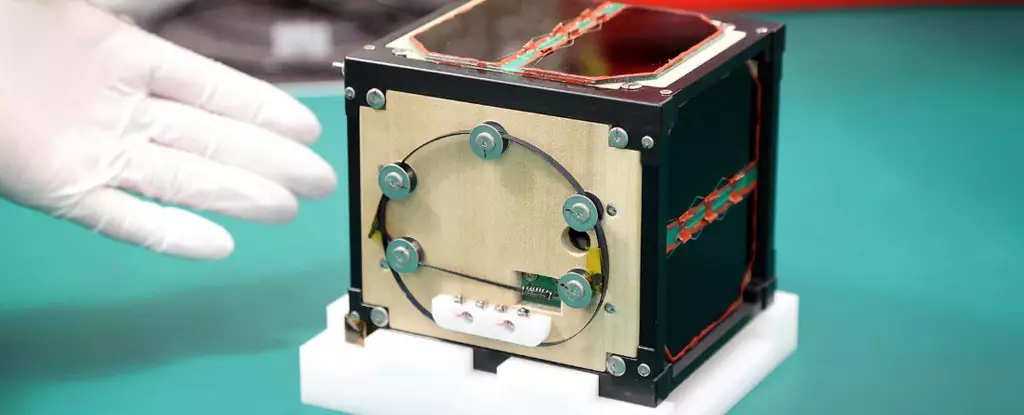In a groundbreaking development for space research and environmental sustainability, the world’s first wooden satellite, named LignoSat, successfully launched aboard a SpaceX rocket on Tuesday. Developed by scientists at Kyoto University, this innovative satellite aims to address a crucial issue: the environmental impact of space debris, particularly metallic particles generated when traditional satellites re-enter the atmosphere. As concerns over space debris and its effects on both the Earth and telecommunications systems grow, the LignoSat project represents a pioneering effort to explore alternative materials for satellite design.
The debut of LignoSat took place during a resupply mission to the International Space Station (ISS) from NASA’s Kennedy Space Center in Florida. Measuring just 10 centimeters (approximately four inches) on each side, the satellite has been carefully designed to study its performance in the harsh conditions of space. A specially prepared container from the Japan Aerospace Exploration Agency housed LignoSat during its journey, and the successful launch was confirmed via a post on social media. A spokeswoman from Sumitomo Forestry, a co-developer on the project, expressed optimism about the satellite’s capabilities, stating that it will be deployed into space around a month after its arrival at the ISS.
The Environmental Implications of Wooden Satellites
Traditional satellites, primarily constructed from metal, contribute significantly to the problem of space debris, which poses risks not only to active satellites but also to human spaceflight missions. As LignoSat is composed of wood, its design aims to burn up upon re-entry into the Earth’s atmosphere, thereby negating the long-lasting impacts of metal debris. This aspect of LignoSat presents a potential paradigm shift in satellite manufacturing, suggesting that non-metallic materials could become a viable standard in the industry. Takao Doi, an astronaut and special professor at Kyoto University, emphasized the importance of this innovation, stating, “Satellites that are not made of metal should become mainstream.”
The primary goal of LignoSat is to evaluate its durability and performance in space through comprehensive data collection. Researchers will monitor the satellite for signs of strain and its ability to endure extreme temperature fluctuations—crucial factors for any space-bound technology. The data gathered from this experiment may illuminate pathways for future applications of eco-friendly materials in aerospace design.
As space agencies and companies grapple with the mounting issue of space debris, the launch of LignoSat serves as an encouraging example of how innovative approaches in materials science can lead to more sustainable practices in satellite technology. With further research, wooden satellites like LignoSat may herald a new era of environmentally responsible exploration beyond our planet.


Leave a Reply